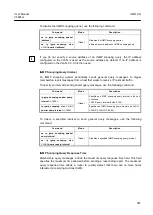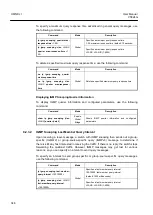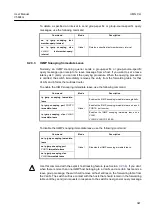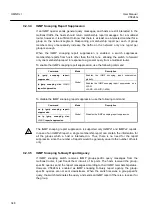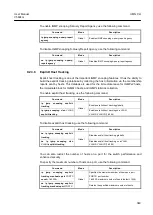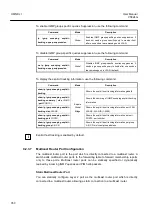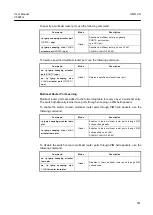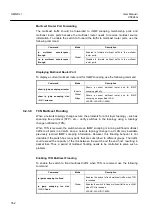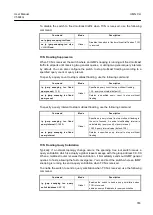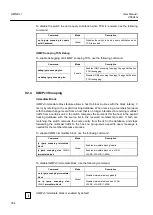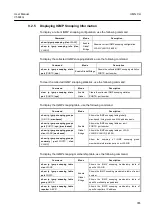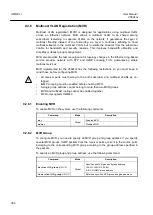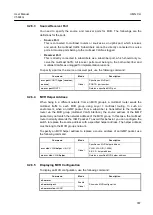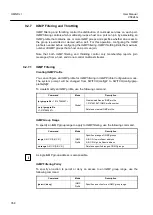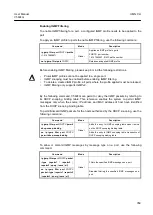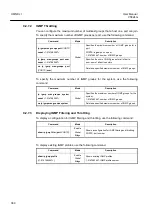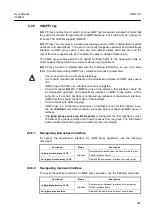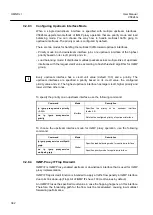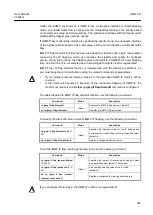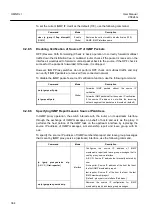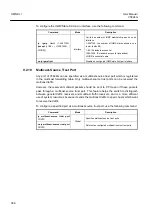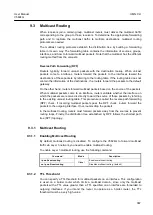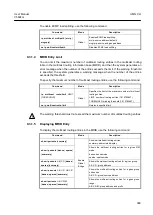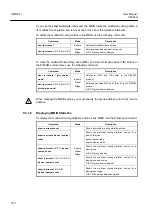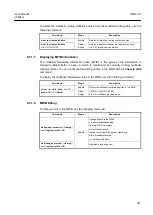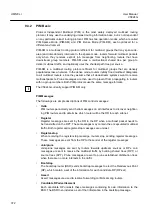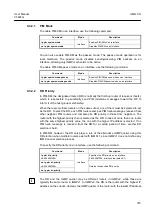
User Manual
UMN:CLI
V5824G
359
Enabling IGMP Filtering
To enable IGMP filtering for a port, a configured IGMP profile needs to be applied to the
port.
To apply an IGMP profile to ports to enable IGMP filtering, use the following command.
Command
Mode
Description
ip igmp filter port
PORTS
profile
<1-2147483647>
Global
Applies an IGMP profile to ports
PORTS: port number
1-2147483647: IGMP profile number
no ip igmp filter port
PORTS
Releases an applied IGMP profile.
Before enabling IGMP filtering, please keep in mind the following restrictions.
•
Plural IGMP profiles cannot be applied to a single port.
•
IGMP snooping must be enabled before enabling IGMP filtering.
•
To delete a created IGMP profile, all ports where the profile applied must be released.
•
IGMP filtering only supports IGMPv2.
By the following command, V5824G can permit or deny the IGMP packets by referring to
its DHCP snooping binding table. This reference enables the system to permit IGMP
messages only when the source IP address and MAC address of host have identified
from the DHCP snooping binding table.
To permit/discard IGMP packets for the hosts authorized by the DHCP snooping, use the
following command.
Command
Mode
Description
ip igmp filter port
PORTS
permit
dhcp-snoop-binding
Global
Adds the entry to IGMP snooping table when it exists
on the DHCP snooping binding table.
no ip igmp filter port
PORTS
permit dhcp-snoop-binding
Adds the entry to IGMP snooping table irrespective of
DHCP snooping binding table.
To allow or discard IGMP messages by message type on a port, use the following
command.
Command
Mode
Description
ip igmp filter port
PORTS
packet
–type
{
reportv1
|
reportv2
|
reportv3
|
query
|
leave
|
all
}
Global
Filters the specified IGMP messages on a port.
no ip igmp filter port
PORTS
packet
–type
{
reportv1
|
reportv2
|
reportv3
|
query
|
leave
|
all
}
Disables filtering the specified IGMP messages on a
port.
!

